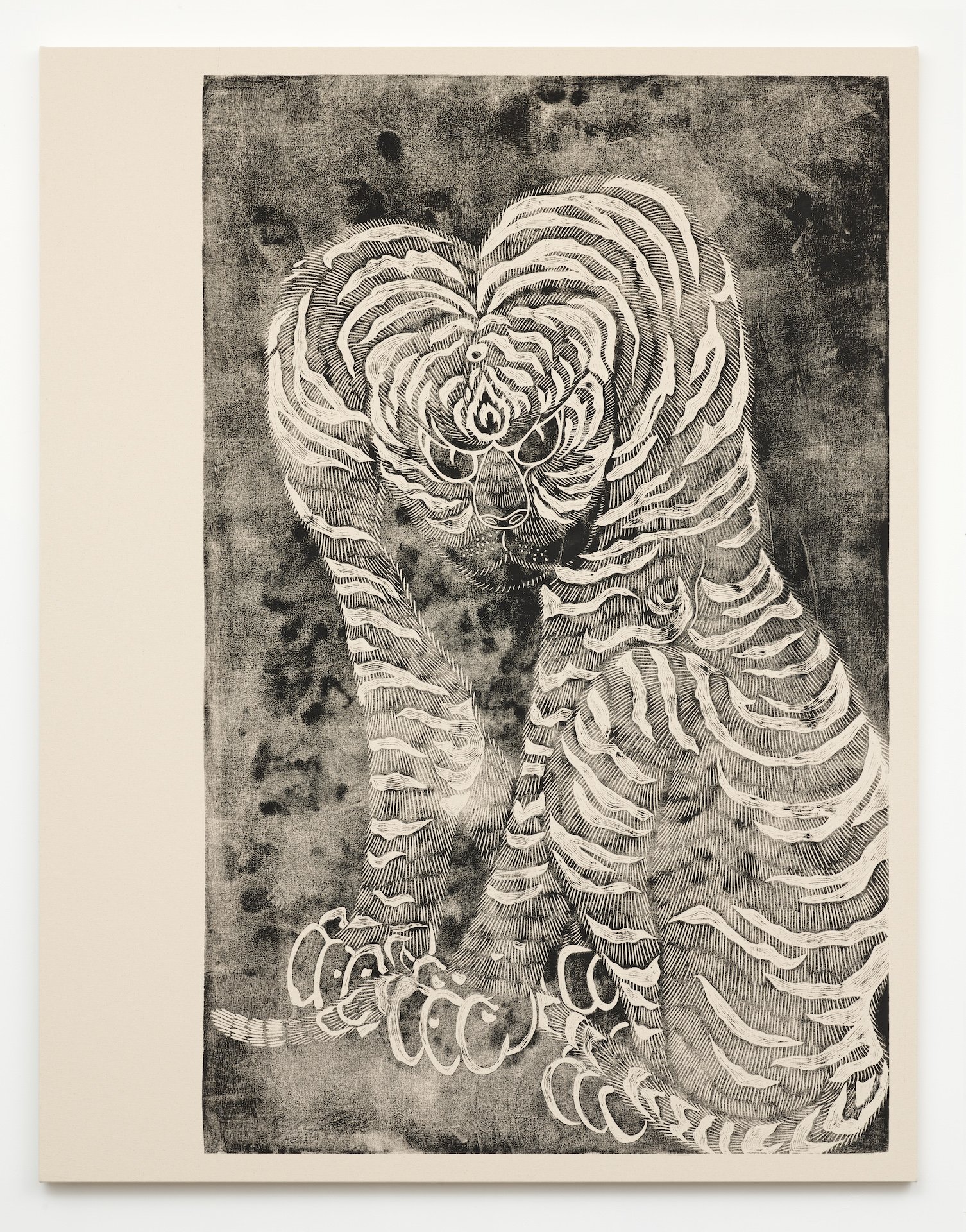
2022 KOUR POUR
Visually hypnotic and historically astute, Kour Pour’s Tiger Paintings reveal forgotten connections among East Asian, European, and Persian art-making traditions, using the tiger motif to remap our understanding of cross-cultural exchange. Pour’s strong sense of shape and shadow recalls German Expressionist aesthetics, and his pulsating stripes build upon Bridget Riley’s experiments in perceptual abstraction. The tigers themselves have journeyed across multiple civilizations, copied and modified by innumerable artists, before ending up in this show. In Pour’s X-ray-like vision, they transform once again, their white stripes crackling like lightning in a mysterious mist.
The stylistic diversity of Pour’s tigers is inspired, in part, by minhwa, a Korean folk painting tradition that borrows freely from disparate sources. Korean minhwa artists would sometimes imitate Chinese or Japanese tiger paintings that were themselves derived from Korean originals — an example of cultural transmission coming full circle. But Kour is also interested in how these same East Asian tiger motifs were adopted by Persian miniaturists in the thirteenth century and German Expressionists in the twentieth. Franz Marc and Heinrich Campendonk, for instance, both made woodcuts of tigers in the Japanese ukiyo-e style.
The block printing technique Pour uses for his one-of-a-kind paintings is significantly more strenuous than that of his Japanese and German predecessors. For his largest pieces, he physically crawls across the backs of the canvases while burnishing them with a baren, a traditional Japanese printmaking tool. The sheer physicality of the process creates a mottled, patina-like surface suggestive of mist or fog, but which is the literal imprint of the artist’s own body. Pour compares it to the atmospheric effects prized by classical Chinese landscape painters, who often strove to depict invisible forces, such as wind.
Rather than placing his Tiger Paintings in any one art-historical lineage, Pour recognizes that the work is a confluence of global traditions that have been interacting with one another for centuries. Astonishingly powerful images in their own right, the Tiger Paintings are also a bridge to history.